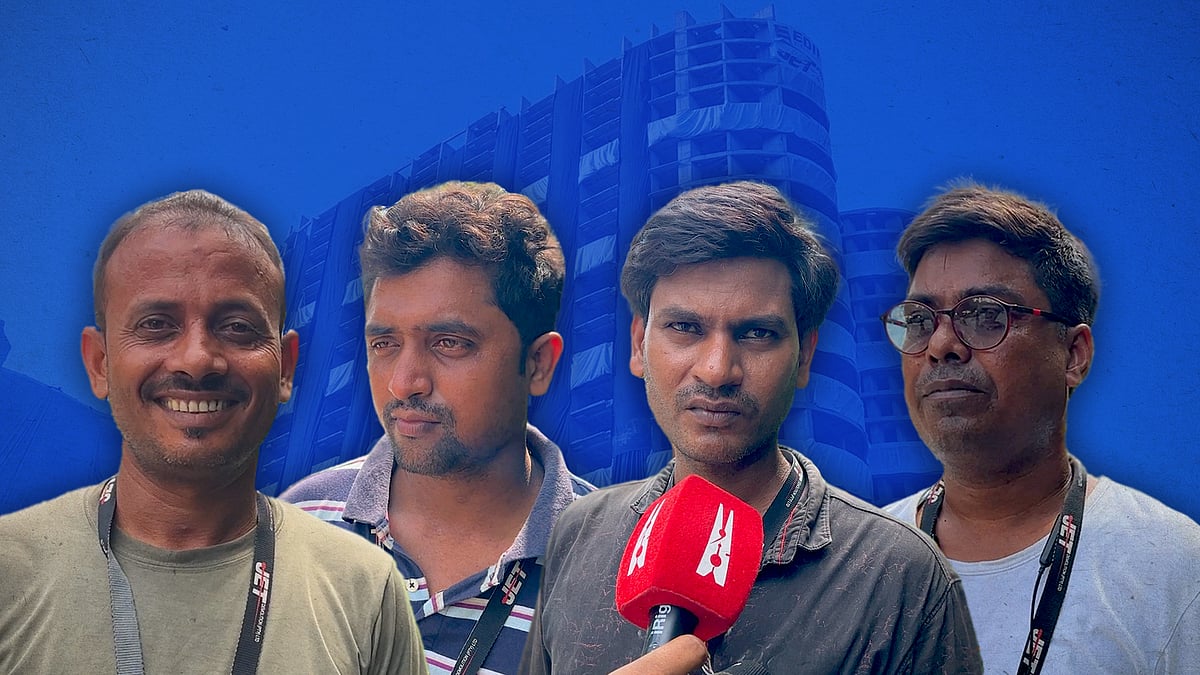‘Picnic spot’: Watching reporters watch Noida’s twin towers come down
Most major TV news networks had stationed multiple crews to cover the demolition.
At just past 2:30 pm on Sunday, a deafening explosion rang out across Noida Sector 93A. Boom it went. And in a matter of seconds the illegally built Supertech twin towers came crashing down into a heap of rubble. Thick clouds of dust, soot and smoke billowed high into the air. Silence swept the observation spot the Noida authorities had designated for the media to cover the spectacle, but only fleetingly. Cheering and whistling quickly filled the moment.
The fate of the residential highrises – 32-storied Apex and 29-storied Ceyane – was sealed last year when the Supreme Court ruled that they had been built in violation of regulations and ordered their destruction.
The demolition job, done by South Africa’s Jet Demolition and Mumbai’s Edifice Engineering, made for a media spectacle, and TV news crews in particular milked it to the last speck. In the manner they usually cover “big news” – in full theatrics mode. The media contingents were camped since early morning on the flyover near Shramik Kunj Chowk, some driving about in open-top cars. Why was this particular spot chosen? "The flyover was designated for the media after they said they would get good visuals from there," said Ganesh Saha, a senior Noida traffic police officer.
One Zee News crew reported from atop a Thar SUV while Times Now went all-in on style, putting one reporter in a red Audi convertible. Network 18 had installed three zip cranes on the flyover to add cinematic effect to their coverage. A few TV channels had also booked the terraces of nearby buildings to plant their camera crews on. "This is a big event and nobody wants to miss a chance to get the best visuals," a Zee News cameraman explained.
Most of the so-called national TV news channels, almost all headquartered in Noida, had deployed multiple crews, each reporting an arm’s length from the other. Zee News alone, by our rough count, had eight reporters on the scene whereas Network 18, Republic, India TV, and India Today each had three-four.
“This flyover looks like a picnic spot, like all the reporters have been sent here for holidaying," a reporter from Zee News remarked, only half in jest.
In the neighbourhoods around the demolished towers, residents spilled out onto sidewalks to watch the big fall. The police had blocked a half-km area around the towers as an “exclusion zone” where nobody except demolition crews were allowed.
But within less than an hour of the demolition the site was buzzing with media personnel and local residents coming in for a closer look at what was left. And what was left was a mound of rubble and roads and trees covered with a thick layer of dust, which municipal workers and firefighters soon began hosing down.
It all seemed to have gone well. No collateral damage was immediately reported in the thickly built-up area, although the local resident welfare associations have only just started inspecting the nearby structures for signs of damage.
The people living in apartment buildings around the demolished tower had been made to leave before 7 am and they will be allowed back only after a “green signal” from the Noida authorities.
Pictures by Pratyush Deep and Basant Kumar.
 'Daring job': Workers demolishing Noida towers eager to show their skills
'Daring job': Workers demolishing Noida towers eager to show their skills